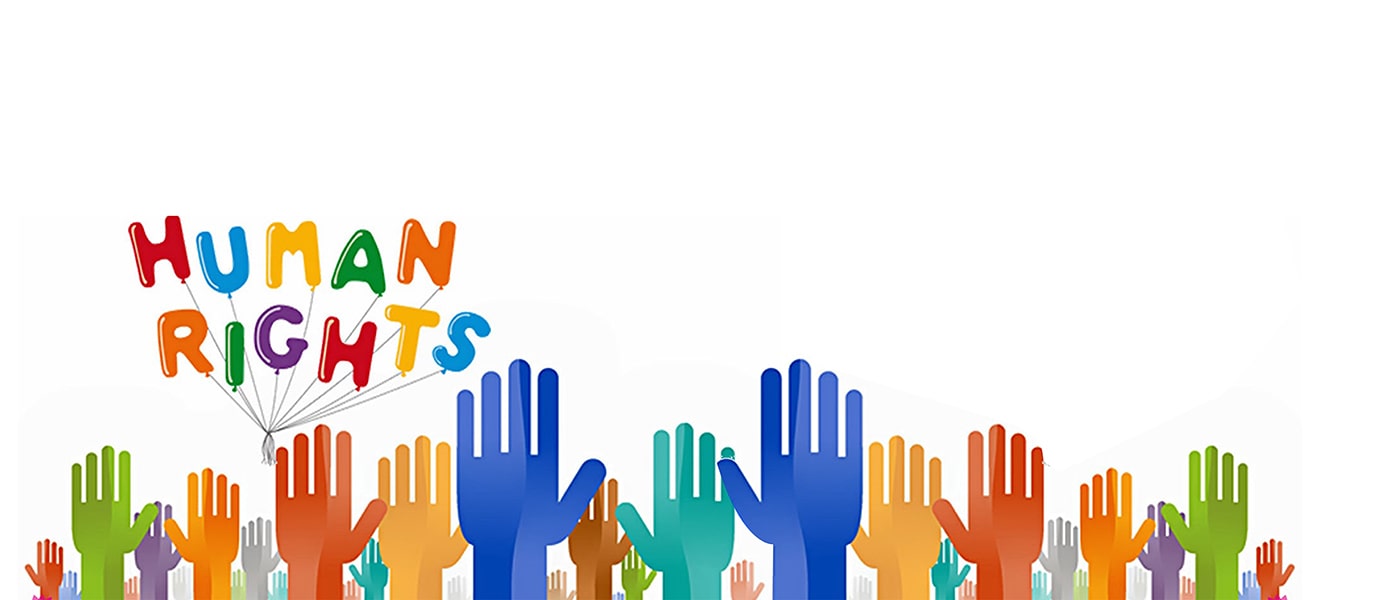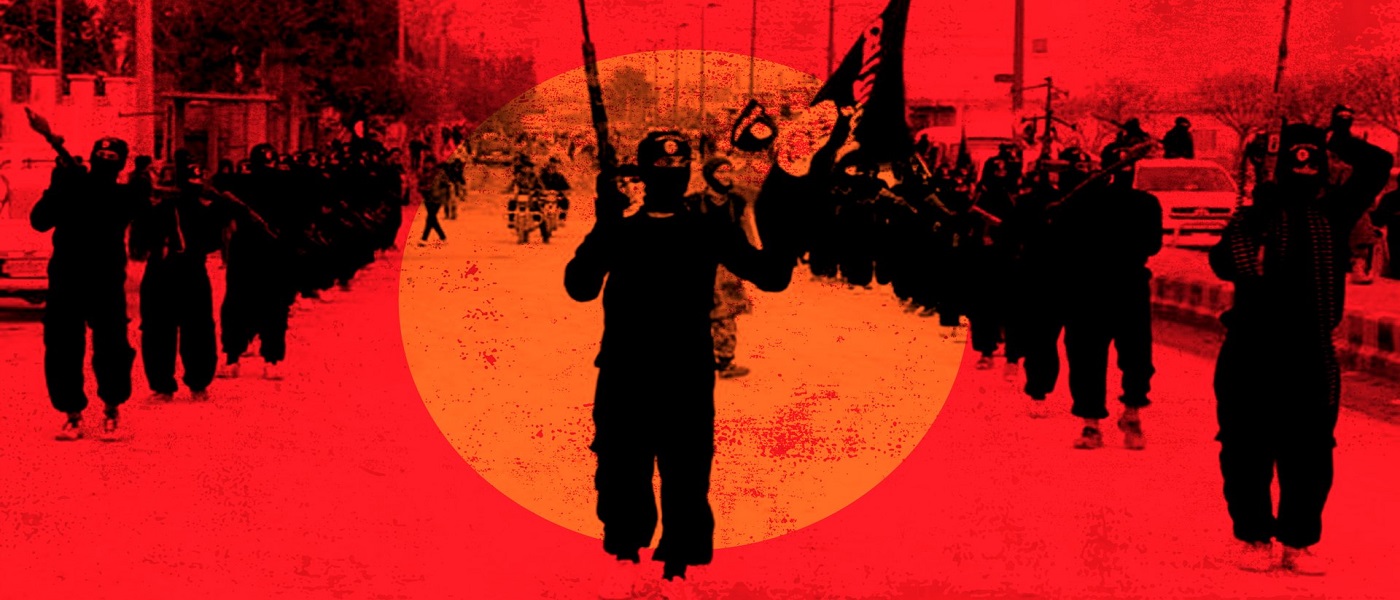

Does Islam recognize Human Rights?
To address this question, we need first to clarify what we mean by ‘human rights’. Does the term refer to the so-called Universal Declaration of Human Rights, the UDHR? Or does it simply refer to the rights of humans in a general sense?
Islam and the Universal Declaration of Human Rights
To start with, Islam does indeed confirm the basic human rights mentioned in the Universal Declaration of Human Rights, the UHDR. That is to say, rights such as the right to life, freedom, equality, etc. are acknowledged by Islam. However, the way Islam looks at these concepts may be different.
That is probably the reason why the Cairo Declaration on Human Rights in Islam, the CDHR, was composed some years later. The declaration included nearly the same basic human rights mentioned in the UHDR; what distinguishes the two, however, is the special perspective of Islam on the Human Being and the subject of rights.
Islam and Human Rights
Before examining human rights from an Islamic perspective, the following points may be considered: Is the concept of human rights a ‘modern’ phenomenon? Are human societies, let’s say human authorities, to define certain rights for human beings? If so, are these established rights all-inclusive? Can they be applied to every human being regardless of time and place or any other particular circumstances?
It seems that Islam has a distinct perspective on human rights; something that has to be elaborated in more detail.
Firstly, Islam views rights as being inherent in human beings. This means that, according to Islam, God has granted humans certain rights since the very beginning of creation. There seems no need for a group of people to establish rights for human beings; whether it be the United Nations or any other international institution.
This can explain, to a great extent, any dissimilarity between Islam and the UDHR. Accordingly, there may be certain rights recognized by Islam that are not found in the United Nations Declaration of Human Rights, and equally, there may be rights stated in the UDHR that are not recognized by Islam.
Human Rights in Islamic Resources: The Quran
If we have a closer look at the Islamic traditions, we realize that not only they have addressed human individual and collective rights in some great detail, but also gone beyond our ‘modern’ definition of the rights of humans! They have introduced something much more valuable, that is, ‘human dignity’!
To begin with, the Holy Scripture of Islam, the Quran, looks upon humans as one endowed with dignity. Human beings’ dignity refers to their advantages. This means that God has endowed them with sublime traits [1].
"Certainly We have honored the Children of Adam ….. and preferred them with a complete preference over many of those We have created" (17:70).
Also, all humans are children of Adam and are created from clay. They are equal regardless of gender differences, ethnicity, color, etc.
"Indeed, We created you from a male and a female and made you nations and tribes that you may identify yourselves with one another"(49:13).
Human Rights in Islamic Resources: The Hadith (Narrations)
There are plenty of writings on the subject of rights in Islamic resources, amongst which Imam Sajjad (AS)’s The Treatise on Rights is one of the best. Imam Ali b. al-Hussain (AS), known as Sajjad (the Often in Prostration) [2], has left a comprehensive account on the issue [3]. Almost 50 rights and duties are introduced and discussed in this momentous document; it includes various social relations of any individual such as rights of parents, spouses, children, neighbors, teachers, students, believers, the leader of Congregational Prayer, the government, etc. It also defines the duties that humans have towards their ‘self’ and even their organs:
“The right of your ‘self’ (nafs) against you is that you employ it in obeying God.”
“The right of the tongue is that you consider it too noble for obscenity, accustom it to good, refrain from any meddling in which there is nothing to be gained, express kindness to the people, and speak well concerning them.” [4]
The treatise was written centuries ago, yet it addresses not only the issue of rights in an extensive manner, but also illustrates the ethical principles of citizenship in detail:
“The right of your neighbor is that you guard him when he is absent, honor him when he is present, and aid him when he is wronged… if you know of any evil from him, you conceal it…You do not forsake him in difficulty, you release him from his stumble, you forgive his sin, and you associate with him generously”.
“The right of the people of your creed is harboring safety for them, compassion toward them…you should love for them what you love for yourself and dislike for them what you dislike for yourself…” [5].
Our concise examination of the Islamic viewpoint on the subject of human rights implies that Islam does recognize human rights. Nonetheless, a particular Islamic perspective on human beings as the honored creature of God with specific rights and duties has to be taken into consideration.
References:
- "Statement on Human Rights" (PDF), Retrieved 2017,
- Islami, S. H. (2005). Retrieved 2017, from Noormags
- Javadi Amuli, ‘Abdullah. Sources Of Human Rights In Islam. Retrieved 2017, from
- ‘Life of Imam Sajjad (a.s)’. Retrieved 2017, from http://shiastudies.org/article/imam-ali-b-al-husayn-al-sajjad-beginner
- ‘Risalat al-huquq’. Retrieved 2017, from http://en.wikishia.net/view/Risalat_al-huquq_(book)
- TREATISE ON RIGHTS (RISALAT AL-HUQUQ). Retrieved 2017,
Share This Article

What are the Health Benefits of Fasting?
When it comes to fasting, many questions might come to mind. Is it even healthy? Is it safe? Does it benefit my fitness goals? Those are the very most typical questions that are asked by the public about fasting. The purest form of fasting, as I am sure you have heard of it, is that of intermittent fasting (IF). Which happens to be good for your health, apt to your fitness goals, and safe.
Intermittent fasting is one of the most popular health and fitness trends nowadays, except that it `is´ not, but `has been´ for thousands of years, practiced by different societies and cultures for a wide range of variable causes. Whether a Zen monk, yogi, Tibetan monk about the Himalayas, or a participant of any Abrahamic or dharmic faith, they all have one thing in common; and that is that they all have fasted. [1] As mentioned in the Holy Quran, “O you who have believed, decreed upon you is fasting as it was decreed upon those before you that you may become righteous(2:183) and as Imam Baqir (AS) has said “Islam has five pillars, and those are: the Prayers (Salat), the alms-tax (Zakat), the holy Pilgrimage (Haj), fasting (of Ramadhan) (Sawm), and the leadership (Imamate),” further centering on the importance of Fasting [2]. Moreover, as the Prophet (PBUH&HP) bids, “All that it is due of Zakat, and Fasting is that of the body´s” [3].
Fasting in Islam is a symbol of freeing oneself from false earthly desires to a more grandiose world, in which possibilities are limitless and power is infinite. In fact, we are too driven by day-to-day life that we never contemplate the things that matter anymore, or at the very least, we do not get to do so. Imam Sadiq (AS) has bid, “Allah has manifested fasting as an obligation to bring equality between the poor and the rich” [4].
The Power of the Present Moment
Such spiritual undertakings such as fasting and praying have a single most important thing in common, and that is the essence of the present moment. The more engaged one is with the high vibrational energies of the moment, the less compulsive and unconscious one becomes. Now we can say that acts like prayers (which brings awareness and facilitates brain and heart coherence) and meditations separate us a little bit from the compulsive and sub-conscience-driven life style of the modern society.
But, imagine you were introduced to a life style of letting go of compulsive behaviours, thoughts, and actions; and deeply become more integrated into the present moment in which high vibrational energies reside. Ramadhan provides this opportunity for over a billion Muslims and the people of other faiths who fast because of the fun it brings, and all fasting acts for that matter. It is very important to know that we are being so driven by life that we don’t know what fun is anymore. We are so reactive nowadays, that we are no more proactive towards our lives, being triggered left and right by what the scholars call super-stimuli (over-stimulating aspects of the modern society, which our cave-man brains have not adapted to its bursts evolutionary-wise) , which our ancestors did not dispose of until as late as late twentieth century. With the rise of super-stimuli, and the further adaptation, but not evolution, of the human brain to the dopamine (the motivation, and reward neurotransmitter) hits, we live a life of chasing phantoms(reliefs) and not challenges.

Dopamine Detoxification
One of the hot topics of modern productivity is the deactivation of the brain´s reward centre for a period of time. Our brain´s reward centre has become very reactive, and non-proactive, and keeps on rewarding us a little shot of dopamine, whether craving a cigarette, a glass of wine, a cup of coffee, or even as far as watching pornography and binge eating for several hours. Activities which have been proven to deliberately deteriorate our physical state [5]. Yet, our brain´s reward centre keeps hitting us with feel-good chemicals. This process goes on and on as far as lowly losing the initial sensation to the initial amount, bringing up the threshold, hence; the excessive habit loop. During Ramadan, though, we break the bad old habits, we become new, as whole as a little baby, as though we have had our serotonin (wellness neurotransmitters) re-set button pushed. Fasting is not only about freeing oneself from food, but rather from all other super-stimuli, such as; negativity, excessive sexual activities, and spilling stimulating liquids down our throats all day long.
Now, we are freed of compulsive unconscious behaviours, and embrace the true happiness of life, the state of blissfulness and joy which is what we are born with. We can sit down not eating, not drinking, not engaging in highly stimulating activities and still feel joy, and a continuous state of happiness, what had since long been robbed of us by the advancements of the modern society. We can feel great now, with the strongest paradigm of manifestation, as mentioned by David R. Hawkins, the one and only superior paradigm to all others: being. [7] Not having, not doing, but simply letting go of the earthly, and connect to the great source of all consciousness that is “God”. As Imam Ali (AS) said “Fasting is as much staying aloof of the taboos as it is staying away of eating” [6].
Physical Health Benefits of Fasting
Studies have shown that the time restricted feeding (TRF) or intermittent fasting (IMF) leads to more weight loss, which is clearly manifested in the Islamic approach to fasting. Consuming more calories in the morning has shown to be more effective than that of evening, as far as metabolism, weight loss, and prevention of obesity-which has come to be a major epidemic in the developing nations. There are self-reports of significant decrease in the volume of the fat tissues under skin which distort the good looks of our bodies. Referred experiments prove that the TRF significantly decreases the body fat, but does not affect the weight in short period of 15 days. Although more weight loss upon hitting a 30 days threshold is expected. [8]
Although cutting calories from everyday diet has quite similar effects like the IMF, Small reductions in total cholesterol (TC), low-density lipoprotein (LDL) cholesterol, triglycerides, and fasting glucose and insulin with IMF have been reported in several studies. The greatest decrease of which is in bad cholesterol contributing to a lesser chance of suffering from heart diseases.
Conclusion
Health benefits of fasting encompasses far greater areas than that of the physical health. It mentally alleviates the individual, and activates a new set of body-substances , which grants us to focus on long-term goals and areas of our lives, and become more process-oriented than result-oriented, and adapts our brain´s reward centre to long-term rewards rather than short-term pleasures. Fasting is very complex, common people have been observed achieve the uncommon by long-term fasting; in fact, so complex that by all advancements in medical science, delving deeper into the topic is an area of future investigations.
References:
- Armutcu, Ferah. (2019). Fasting may be an alternative treatment method recommended by physicians.
- Muhammad ibn Ya'qub al-Kulayni al-Razi , Forou Kafi, vol. 4, Pg. 62, 1.
- Muhammad ibn Ya'qub al-Kulayni al-Razi , Al-Kafi, vol. 4, Pg. 62, 3.
- Muhammad ibn Babawayh , Man La Yahdaraho al-Faqih, vol. 6, Pg. 43, 1.
- de Zwaan, M. Binge eating disorder and obesity.
- Muhammad Baqir Majlisi, Bihar al-Anwar, vol. 93, Pg. 249,
- Erik H. Cohen, Rachel Sagee et Rivka Reichenberg, « Being, Having and Doing Modes of Existence
- Effectiveness of Intermittent Fasting and Time-Restricted Feeding Compared to Continuous Energy Restriction for Weight Loss.
Read More

Is There an ISIS in Every Era?
Before the appearance of a group called ISIS, I always wondered if it is possible for people to easily behead men, to kill children and cut the bodies into pieces. I had repeatedly heard and read the event of the tenth day (Ashura) in Muharram of 61 AH, in which the grandson of Prophet Muhammad (PBUH&HP), who was the leader (Imam) of Muslims at his time, and the males of his family and companions were martyred, beheaded and cut into pieces.
While I was reading those events, I started thinking about what kind of a person is capable of doing such horrible acts? Who were the people of that era who stood against their leader and watched him getting martyred and beheaded, because he could not morally and ethically accept the caliphate of a corrupt leader over the Muslim society?
I found answers to my questions in the past few years when some terrorist groups began to take advantage of some of the verses of the Holy Quran and use it as a pretext for their evil purposes. These terrorist groups, the most recent of them Taliban, Al-Qaida and ISIS, are very much the same as those who considered themselves Muslims and stood against the grandson of Prophet Muhammad (PBUH) and the leader of Muslim society, who was the manifestation of Islam, under the name of supporting the corrupt oppressor caliph; Yazid.
Having people with different attitudes who all believe that they are true Muslims makes it hard for truth-seekers to find the right path in life.
In this article, we will revise the reasons for which a group like ISIS would appear, grow and spread in the world in the name of Islam. We will try to clarify a few points by which we can make a border between the real Islam and the unreal Islam that is being used as the tool of terrorism.
To begin, let’s see what the main types of Muslims that we face these days are.
1. The passive representation of Islam
The passive depiction of Islam is the sort of Islam that is at peace with EVERYTHING in this world. Whatever happens, the passive Muslim will not show any reactions. These types of Muslims believe in having a safe and calm life. They have no considerable social or political involvements. If an issue arises in the community or the society, they prefer to remain silent and show no reactions toward it, as it may cause some harm to them or their benefits.
One may think that this type of Islam is the best as it does not harm the believer or others in the society. But the fact is that according to Islam or any other Abrahamic religion, he who remains silent, at a time when he has to stand against an oppressor or to help a human in a reasonable need, has no value in the eyes of God in this world or the other [1].
It is also firmly narrated by Prophet Muhammad (PBUH) that “whoever starts his day with no efforts on Muslims’ issues IS NOT A MUSLIM” [2]. This is how Prophet Muhammad (PBUH&HP) excludes passive Muslims from the true Islam.
In the same way it is stated in the Holy Quran that: “Why should you not fight in the way of Allah and the oppressed men, women, and children, who say, ‘Our Lord, bring us out of this town whose people are oppressors, and appoint for us a guardian from Yourself, and appoint for us a helper from Yourself’?” (4:75)
2. The wild representation of Islam
The wild representation of Islam is much worse, much more inaccurate and much further from the real context of Islam than the passive representation. Silent Muslims will cause damages to others by not helping them at the right time, while Wild people who act, using the name of Islam, will hurt the society, families, and a whole generation that is to come.
All terrorists who call themselves Muslims and make the world an unsafe place for human beings are amongst those wild creatures. They kill children, men and women all over the world by using their invented and wrong interpretations of a few verses of the Holy Quran, trying to demolish the religion of God.
They ignore all the verses of the Holy Quran and the teachings of Prophet Muhammad (PBUH) and his successors that emphasize tolerance, kindness toward human beings and animals, protecting the environment, supporting the truth, gentle speaking, respecting the humankind, and observing the rights of the previous religions.
Facing this representation of Islam, one may think that these people are either very ignorant and indolent that will not even spend some time on understanding the real Islam, OR use some parts of Islam as a part of a bigger plot by which they can reach their hypocritical goals.
The true Islam
But put aside the passive and the wild representations of Islam, and let us find out what the true Islam is and how we can recognize the true Islam from among its different representations.
We do not insist that every truth-seeker should conclude accepting Islam as his religion, but there are hints and guidelines for every truth-seeker to realize the true path of life.
Here we will count a few of these hints:
A) Have no prejudice in searching for the truth
It is important that even those who have specific beliefs, start researching and rebuilding their mindset. If we do not keep thinking about our beliefs, we will be dogmatic people who have no logical answers to other people’s questions about their ideas.
Not being prejudiced about our views gives us an open mind. Therefore, if we face a belief that may be contrary to ours, but we find it closer to the truth than ours, we should be able to change our idea and follow the best route.
Prophet Muhammad (PBUH&HP) says: “Avoid prejudice, as it begins with ignorance and ends up in regression” [4].
B) Support the truth
“Do not mix the truth with falsehood, nor conceal the truth while you know” (2: 42).
Most of us experience situations in which we have to choose between our benefits and the truth. This is what we call fairness. It is essential to be careful about taking the right side even if it is against our benefits. Although sometimes by supporting the truth we may lose our worldly benefits, it is important to remember that reaching the ultimate purpose of humanity is hidden in taking the right side.
C) Listen carefully and completely
“… So give good news to My servants, who listen to the word [of Allah] and follow the best [interpretation] of it. They are the ones whom Allah has guided, and it is they who possess intellect” (39: 17- 18).
Unfortunately, the wrong presentations of Islam come from the point where people take some advice from the Quran and leave the rest instead of looking at it as a whole. For example, those who stand for the rights of Muslim women and try to revive their rights, stick to a few verses of the Quran that are about women.
They do not understand Islam’s aim of ordering women to observe the Islamic dress code, so they start campaigns against it. While if they read the Quran as a whole alongside with the prophet’s teachings, and put different pieces of the puzzle together, they will realize that the Islamic dress code, plus men’s and women’s etiquette of looking, plus men’s role in supporting the family and women’s role in calming the atmosphere of the house, and many other pieces of the puzzle are to make the society a better place for all members to live in.
D) Animals’ Rights
According to the Quran, all the creatures [including animals] have been created to serve human being (2: 29). But if we need to use animals for our needs, we should not forget that we have a huge responsibility towards them as living creatures. The rights of animals are of much importance in Islam, and we have a lot of narrations from Prophet Muhammad (PBUH) and his successors with regards to them.
An example is a narration by Prophet Muhammad (PBUH): “When you stop riding an animal, do not keep sitting on them while having a [lengthy] conversation with others; instead, descend and [let the animal rest, and] then talk” [6].
E) Love for humanity
And finally, the Golden Rule that if we all follow, we will experience a peaceful life in this world and the hereafter is stated in the letter of Imam Ali (AS) to his son who said:
“O, my child! Make yourself the measure (for dealings) between you and others. Thus, you should desire for others what you desire for yourself and hate for others what you hate for yourself” [5].
Conclusion
At the beginning of this article, we read those who martyred Imam Hussain (AS) and his companions on the tenth day (Ashura) in Muharram of 61 AH, are the ones who took advantage of the name of Islam to gain their worldly desires. We discussed that the same thing is happening in our era and different terrorist groups, by misusing the name of Islam, try to divert people from the true guidance and the peaceful path of life.
This reminds me of the famous saying “every day is Ashura, and every land is Karbala.”; Which means the confrontation between right and wrong always exists. This may be a simple confrontation in family relations, at work or in the community, or it may be a more significant conflict between the countries.
No matter we are Muslim or Christian or Jewish. The fact is that the history repeats itself. And it is vital for us to be wise enough to realize the truth and support it. Imam Hussain (AS) on the tenth day (Ashura) faced the massive army of Yazid and told them:
“If you neither believe in religion nor fear the hereafter, then at least be free from tyranny and arrogance” [8].
References:
- Majlesi, Bihar al-Anwar, vol. 74, p. 311.
- Al-Kafi, vol. 2, p. 164.
- The Quran, Chapter 4 (Al-Nisa’), verse. 75.
- Mizan al-Hikmah, vol. 4, p. 2770.
- Majlisi, Bihar al-Anwar, vol. 64, p. 173.
- Majlisi, Bihar al-Anwar, vol. 64, p. 214.
- Nahjul – Balagha; letter 31.
- wedMajlisi, Bihar al-Anwar, vol.74, p. 91.
Read More

